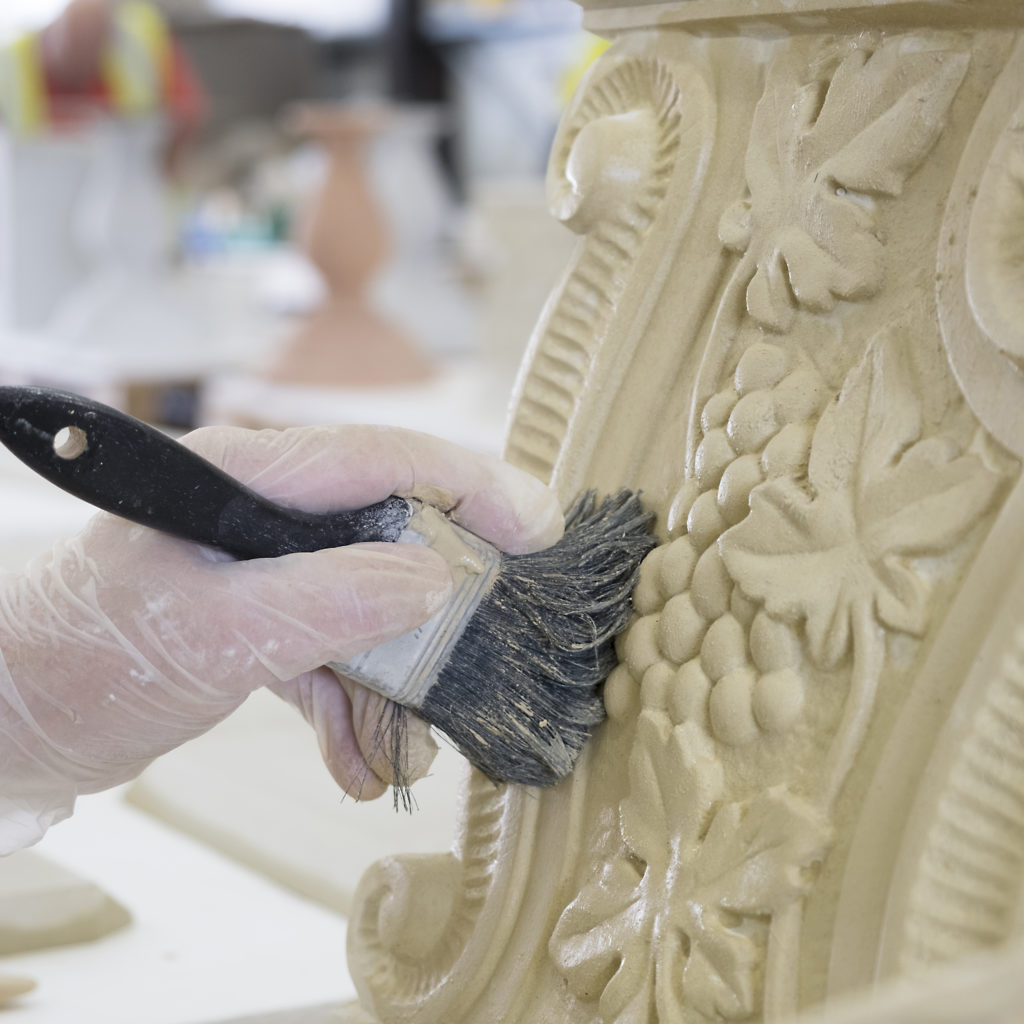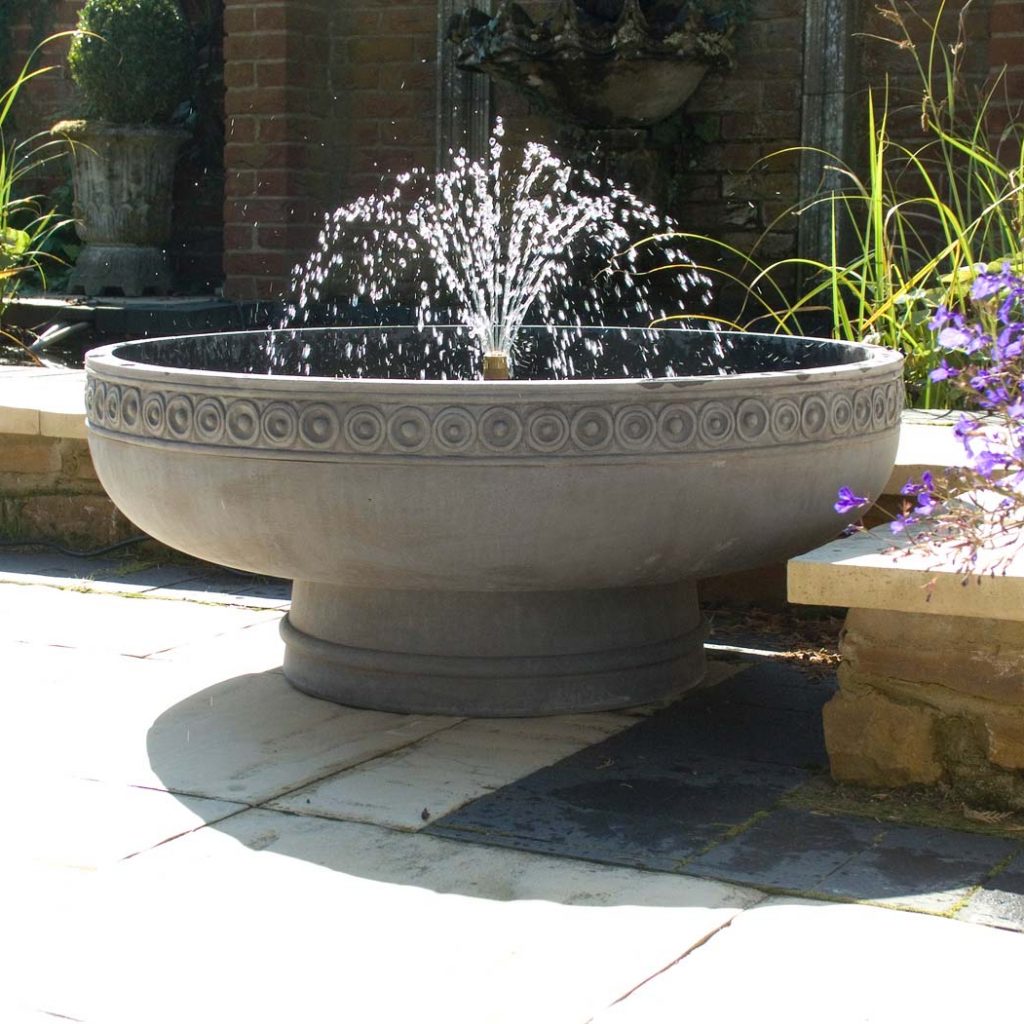How to Care for & Clean Cast Stone in Winter
To care for your stonework and to keep it looking pristine, you should take care to remove any build-up of dust, dirt and grime. To do this, we recommend using a gentle, non-invasive method such as cleaning your cast stone with fresh, clean water before applying a mild, environmentally-friendly detergent with a soft nylon brush. A power washer should always be used on a very low pressure setting and the nozzle must constantly be moved to prevent any localised damage.
Top tips for cleaning your stonework
Throughout the year, we receive many calls from our clients who are keen to know how they can clean and care for their Haddonstone designs. Cast stone is an incredibly strong and durable material so it needs very little looking after, however, by using a few simple and inexpensive cleaning methods, you can ensure that your designs remain as attractive as the day you purchased them.
Before undertaking any cleaning it is worth considering what your design may look like after it has been cleaned. Like natural stone, cast stone weathers differently depending on where it is located and how long it has been exposed to the elements. For example, if the front aspect of your design is in direct sunlight for the majority of the year and the back is mainly shaded, both will weather inconsistently and any cleaning will only enhance that contrast. This does mean however that your cast stone design is truly unique and will display its own variations in texture and colour. Many of our customers simply love how their cast stone designs weather so uniquely over time!
The best cleaning methods for your stonework
We always recommend testing the following cleaning methods on a small, inconspicuous area first before continuing to clean any visible areas.
Firstly, remove any heavy encrustations on your stonework by scraping away moss, lichen and built-up dirt with a dry sponge or a soft bristle brush. Always use take great care not to cause localised damage to the outer surface of the stonework by rubbing the surface too harshly.
Next, apply a gentle cleaning method such as washing your cast stone with fresh, clean water to remove further top-level dirt and blemishes. This can sometimes be enough to simply improve the appearance of your stonework and is especially the case with newer designs, or those that have not been exposed to months of inclement weather.
Judicious use of a soft nylon brush applied using a soft, circular motion and with a mild, environmentally-friendly detergent should remove most stains without scratching your design, or for the need to use stronger proprietary chemicals and abrasive cleaners.
A power washer can be used on really tough, built-on grime, but always remember to use a very low-pressure setting and constantly move the nozzle to prevent damage.
Taking care of self-contained fountains this winter
Whilst all Haddonstone water features are frost resistant, they do require some protection during the colder months. It is important to prepare your water feature for severe freezing conditions that can cause significant damage, particularly to the electrical pump.
Always remember to drain down your water feature each year until any risk of hard frost has passed. This will prevent the water from freezing inside the bowl which can potentially cause cracking to the stonework – we find that this is particularly important for wall bowl and trough fountains.
During mild periods of frost you can simply place a tennis ball into your fountain bowl to continually agitate the surface and prevent the water from freezing. Dismantling the pump and giving it a thorough clean each year will ensure it works efficiently when you next use it during the warmer months.
Empty smaller fountains with a sponge before covering them to prevent them refilling with rainwater. Fountain covers are a great way to protect your fountain from the elements, as well as fallen leaves and garden debris.
Limescale build-up can simply be removed using the above cleaning methods.
Protecting bird baths during winter
Like water features, bird baths require some protection during the colder months and adding a tennis ball to your bird bath will prevent it from freezing in the same way that it will stop your garden fountain from doing so.
We recommend taking care of our feathered friends by regularly filling your bird bath with fresh, clean drinking water during the winter. Line your bird bath with a plastic sheet or a strong bin bag, which can simply be lifted out of the bird bath should the water freeze over. Always avoid using hot water as this may crack the stone.
Finally, avoid the use of chemicals at all costs – whilst abrasive cleaners can help cleanse your bird bath of dirt and grime, they are poisonous to birds and may even prevent their feathers from being waterproof.
Speak to our team
Whether you’re working on a private residential or large commercial project, or if you are interested in home and garden products, our friendly and expert team are happy to discuss your requirements.



